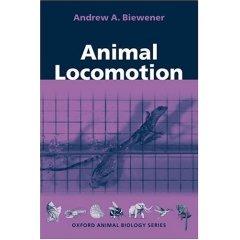| 2020ok Directory of FREE Online Books and FREE eBooks |
Free eBooks > Nonfiction > Social Sciences > Anthropology > Physical > Animal Locomotion
Animal Locomotionby J. Bell Pettigrew  Download Book (Respecting the intellectual property of others is utmost important to us, we make every effort to make sure we only link to legitimate sites, such as those sites owned by authors and publishers. If you have any questions about these links, please contact us.) link 1 About Book Review "This book is a clear advance over previous volumes on this subject... Biewener does a remarkable job of explaining difficult concepts clearly... This volume is an outstanding addition, and will nicely supplement undergraduate or graduate classes in vertebrate physiology." --The Quarterly Review of Biology Book Description This book provides a clear foundation, based on physical biology and biomechanics, for understanding the underlying mechanisms by which animals have evolved to move in their physical environment. It integrates the biomechanics of animal movement with the physiology of animal energetics and the neural control of locomotion. The author also communicates a sense of the awe and fascination that comes from watching the grace, speed, and power of animals in motion. Movement is a fundamental distinguishing feature of animal life, and a variety of extremely effective mechanical and physiological designs have evolved. Common themes are observed for the ways in which animals successfully contend with the properties of a given physical environment across a diversity of life forms and varying locomotor modes. Understanding the common principles of design that span a diverse array of animals requires a broad comparative and integrative approach to their study. This theme persists throughout the book, as various modes and mechanisms of animal locomotion are covered. Since an animal's size is equally critical to its functional design, the effects of scale on locomotor energetics and mechanics are also discussed. Biewener begins by examining the underlying machinery for movement: skeletal muscles used for force generation, skeletons used for force transmission, and spring-like elements used for energy savings. He then describes the basic mechanisms that animals have evolved to move over land, in and on the surface of the water, and in the air. Common fluid dynamic principles are discussed as background to both swimming and flight. In addition to discussing the locomotor mechanisms of complex animals, the locomotor movement of single cells is also covered. Common biochemical features of cellular metabolism are then reviewed before discussing the energetic aspects of various locomotor modes. Strategies for conserving energy and moving economically are again highlighted in this section of the book. Emphasis is placed on comparisons of energetic features across locomotor modes. The book concludes with a discussion of the neural control of animal locomotion. The basic neurosensory and motor elements common to vertebrates and arthropods are discussed, and features of sensori-motor organization and function are highlighted. These are then examined in the context of specific examples of how animals control the rhythmic patterns of limb and body movement that underlie locomotor function and stability. About the Author Professor Andrew A. Biewener Concord Field Station, MCZ Harvard University Old Causeway Road Bedford, MA 01730 001 781-275-1725 x13 001 781-275-9613 abiewener@oeb.harvard.edu Charles P. Lyman Professor of Biology, Harvard University Editor, Journal of Experimental Biology; editorial boards of Journal of Morphology; Physiological Biochemistry and Zoology and Journal of Experimental Zoology; (currently: past-President, American Society of Biomechanics) Related Free eBooks
| Related Tags |












SEND A COMMENT
PLEASE READ: All comments must be approved before appearing in the thread; time and space constraints prevent all comments from appearing. We will only approve comments that are directly related to the article, use appropriate language and are not attacking the comments of others.